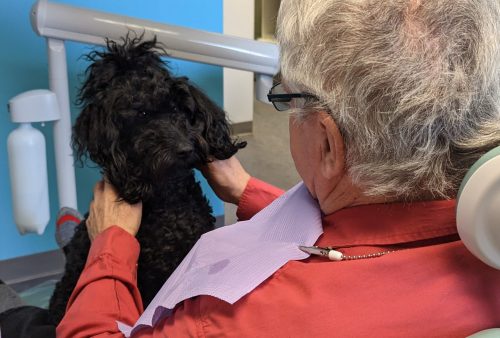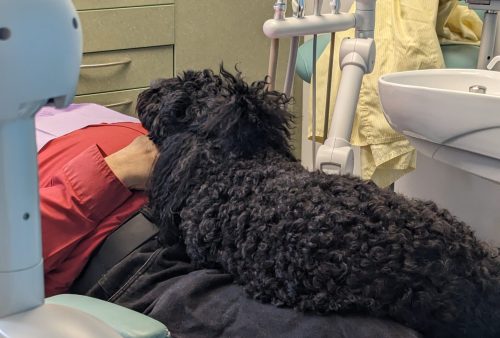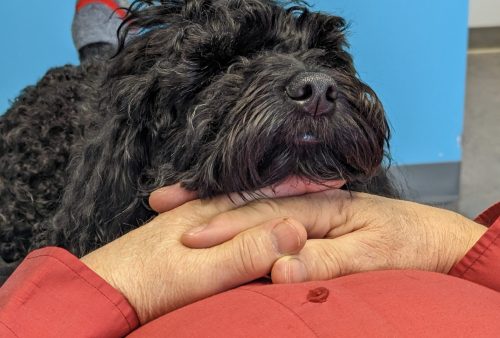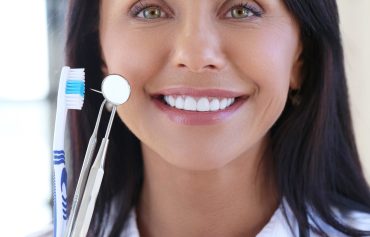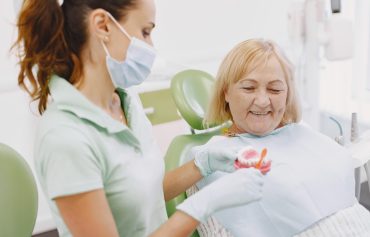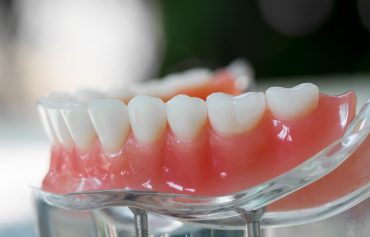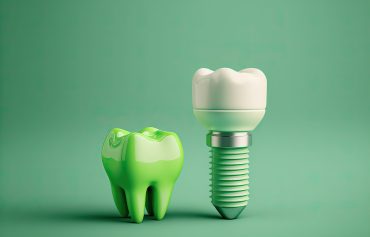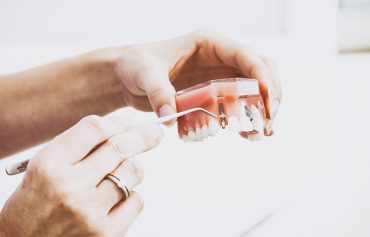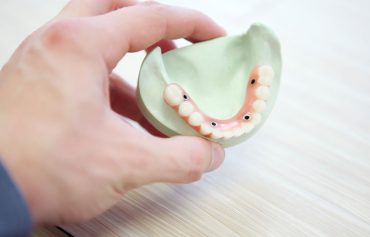Dentist Tips
Dentist Tips
A healthy smile is more important than a “perfect” smile.
Repeat after us: healthy is beautiful. Who better to define what beauty means to you, than YOU? Our smiles are part of what make us unique. To us, the most important thing about your smile is that it’s healthy enough to last a lifetime, and that YOU feel great about it. That’s why at a first visit you’ll often hear us ask: what do you love about your smile, and is there anything you’d like to change about it? Our job is not to tell you what to do, or how you should look, but to help you understand what’s going on when it comes to your oral health, and provide you with information and options so you can decide what works best for you.
The most important dental work you’ll ever have done is what you do at home.
The best possible dental tip we can give you to keep your smile healthy and bright is to keep up a great dental hygiene routine at home that includes brushing twice a day for 2 minutes, and flossing at least once a day. Dental decay is one of the most common and preventable diseases in the world. While there are other contributing factors that can lead to decay and cavities such as genetics, medications, and certain medical conditions, the most common risk factor for developing cavities is still a lack of proper oral care at home.
It’s more important to have properly aligned teeth than “perfectly straight” teeth.
While braces and other orthodontic treatment often result in nice, straight, evenly spaced teeth, the most important result is that your bite is properly aligned. Some signs that may indicate a need for orthodontic treatment include difficulty chewing or biting of the lips or cheek, crowding or extra spacing between teeth, clenching or grinding, headaches, or protruding teeth. Sometimes shifting teeth can also be a sign of periodontal or gum disease. In some cultures, a gap between the front teeth (called an upper midline diastema) is considered a very attractive trait, and can be passed down through the generations. For some people, their gap is part of what makes them who they are. As long as the upper midline diastema is not caused by gum disease or any other pathology, it is possible to correct the alignment in the rest of the mouth, and leave your signature gap.
We poke at your gums because we care about you.
Yes, your dentist or hygienist may poke around your gum line during your checkup. Yes, sometimes folks may experience tenderness or some bleeding. Yes, we may ask you about your flossing habits, or anything going on in your medical history. Gum disease affects nearly half of adults over the age of 30. Your gums are the foundation for your teeth. Risk factors for gum disease include genetics, age, certain medical conditions, medications, and a history of smoking, but the most common risk factor is that in general, many folks just don’t floss often enough.
Friends don’t let friends over-whiten their teeth.
White, bright teeth can be a pretty wonderful thing. In-office and at-home teeth whitening are common ways for people to transform and feel more confident about their smile. However, it is possible to have too much of a good thing. The agents used during office procedures, as well as for at-home whitening can actually do more harm than good if they are used too frequently.
Start children early.
Despite great strides in decay prevention, one in four young children develops signs of tooth decay before they start school. Half of all children between the ages of 12 and 15 have cavities. Dental care should begin as soon as a child’s first tooth appears, usually around six months. Teeth can be wiped with a clean, damp cloth or a very soft brush. At about age 2, you can let kids try brushing for themselves -- although it’s important to supervise.
Seal off trouble.
Seal off trouble. Permanent molars come in around age 6. Thin protective coatings applied to the chewing surfaces of the back teeth can prevent decay in the pits and fissures. According to the Centers for Disease Control and Prevention, sealants can significantly reduce cavities.
Use enough -- but not too much -- fluoride.
The single biggest advance in oral health has been fluoride, which strengthens enamel, making it less likely to decay. If your water isn’t fluoridated, talk to your dental professional, who may suggest putting a fluoride application on your teeth. Many toothpastes and mouth rinses also contain fluoride. Fluoride should be used sparingly in young children - no more than a pea-sized dab on the toothbrush. Too much can cause white spots on teeth.
Brush twice a day and floss daily.
Gum disease and tooth decay remain big problems -- and not just for older people. Three-fourths of teenagers have gums that bleed, according to the ADHA. Along with the basic advice, remember: • Toothbrushes should be changed 3 to 4 times a year. • Teenagers with braces may need to use special toothbrushes and other oral hygiene tools to brush their teeth. Talk to your dentist or orthodontist. • Older people with arthritis or other problems may have trouble holding a toothbrush or using floss. Some people find it easier to use an electric toothbrush. Others simply put a bicycle grip or foam tube over the handle of a regular toothbrush to make it easier to hold.
Rinse or chew gum after meals.
In addition to brushing and flossing, rinsing your mouth with an antibacterial rinse can help prevent decay and gum problems. Chewing sugar-free gum after a meal can also protect by increasing saliva flow, which naturally washes bacteria away and neutralizes acid.
Block blows to teeth.
Sports and recreational activities build healthy bodies, but they can pose a threat to teeth. Most school teams now require children to wear mouth guards. But remember: unsupervised recreational activities like skate-boarding and roller-blading can also result in injuries. Your dentist can make a custom-fitted mouth guard. Another option: buy a mouth guard at a sporting goods store that can be softened using hot water to form fit your mouth.
Don’t smoke or use smokeless tobacco.
Tobacco stains teeth and significantly increases the risk of gum disease and oral cancer. If you smoke or use chewing tobacco, consider quitting. Counsel your kids not to start.
Eat smart. At every age.
A healthy diet is essential to healthy teeth and gums. A well-balanced diet of whole foods -- including grains, nuts, fruits and vegetables, and dairy products -- will provide all the nutrients you need. Some researchers believe that omega-3 fats, the kind found in fish, may also reduce inflammation, thereby lowering risk of gum disease, says Anthony M. Iacopino, DMD, PhD, dean of the University of Manitoba Faculty of Dentistry.
Avoid sugary foods.
When bacteria in the mouth break down simple sugars, they produce acids that can erode tooth enamel, opening the door to decay. Sugary drinks, including soft drinks and fruit drinks, pose a special threat because people tend to sip them, raising acid levels over a long period of time. Carbonated drinks may make matters worse, since carbonation also increases acidity. Sticky candies are another culprit, because they linger on teeth surfaces.
Make an appointment.
Most experts recommend a dental check-up every 6 months -- more often if you have problems like gum disease. During a routine exam, your dentist or dental hygienist removes plaque build-up that you can’t brush or floss away and look for signs of decay. A regular dental exam also spots: • Early signs of oral cancer. Nine out of 10 cases of oral cancer can be treated if found early enough. Undetected, oral cancer can spread to other parts of the body and become harder to treat. • Wear and tear from tooth grinding. Called bruxism, teeth grinding may be caused by stress or anxiety. Over time, it can wear down the biting surfaces of teeth, making them more susceptible to decay. If your teeth show signs of bruxism, your dentist may recommend a mouth guard worn at night to prevent grinding. • Signs of gum disease. Gum disease, also called gingivitis or periodontitis, is the leading cause of tooth loss in older people. “Unfortunately, by the time most people notice any of the warning signs of periodontitis, it’s too late to reverse the damage,” says Sam Low, DDS, professor of periodontology at the University of Florida and president of the American Academy of Periodontology. Periodically, your dental professional should examine your gums for signs of trouble. • Interactions with medications. Older patients, especially those on multiple medications, are at risk of dry mouth, or xerostomia. Reduced saliva flow increases the risk of decay and gum problems. As many as 800 different drugs cause dry mouth as a side effect, says Iacopino, dean of the University of Manitoba Faculty of Dentistry. “Always tell your dental professional about any medications you take,” he says. A change in prescriptions may help alleviate the problem. Saliva-like oral mouthwashes are also available.
Our Professional & Friendly Dentists
The specialists at Bubnik Dental make efforts to provide gentle and caring treatments to ensure your experience is as comfortable and stress-free as possible. Meet Barrington the official stress relief dog. Barrington is very empathetic offers patients calming comfort.



